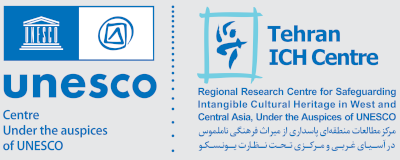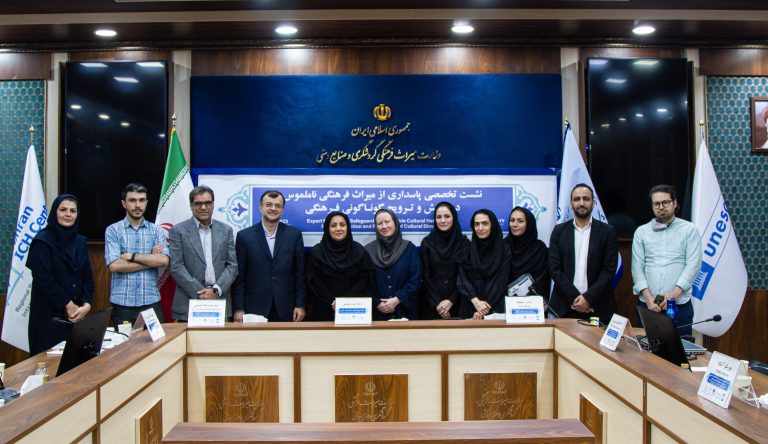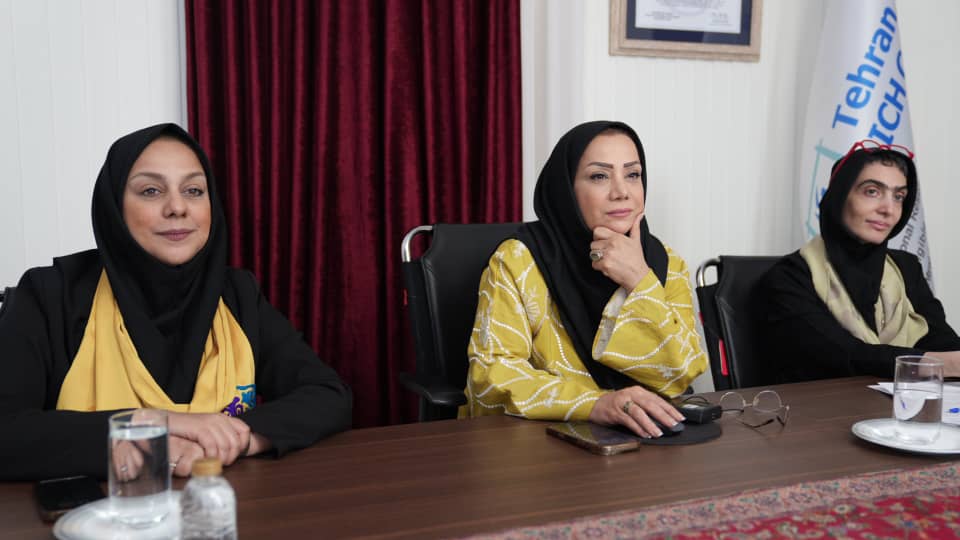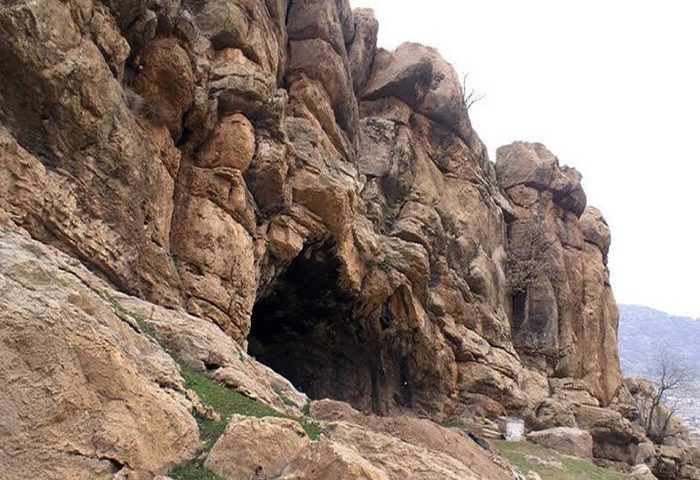On 17 May 2023, the Regional Research Centre for Safeguarding Intangible Cultural Heritage in West and Central Asia (under the auspices of UNESCO), Tehran ICH Centre for short, organised an expert meeting on “Safeguarding Intangible Cultural heritage (ICH) for the Protection and Promotion of Cultural Diversity”, jointly with the Ministry of Culture and Islamic Guidance and the Ministry of Cultural Heritage, Tourism and Handicrafts. The meeting that was held both online and in presence, hosted major experts from Indonesia and Japan as well as national experts, researchers and officials from each of the organising entities.
The main objective pursued by this event was an overview of the role of safeguarding Intangible Cultural Heritage and the 2003 convention in the protection and promotion of cultural diversity 20 years after the adoption of the convention by UNESCO.
The topics of the presentations delivered included: Valuing cultural diversity through safeguarding living heritage and supporting human creativity; living heritage and cultural diversity, cultural engineering in diverse cultures; intangible cultural heritage and diversity of cultural expression; raising self-awareness through cultural heritage: Iranian local communities, public sphere and ICH; and an overview of the role of the 2003 convention in improving the subsistence economy of cultural communities.
Following an introductory and welcome speech by Dr Atusa Momeni, Acting Director of the Tehran ICH Centre, the speakers delivered their talks in the following order and content.
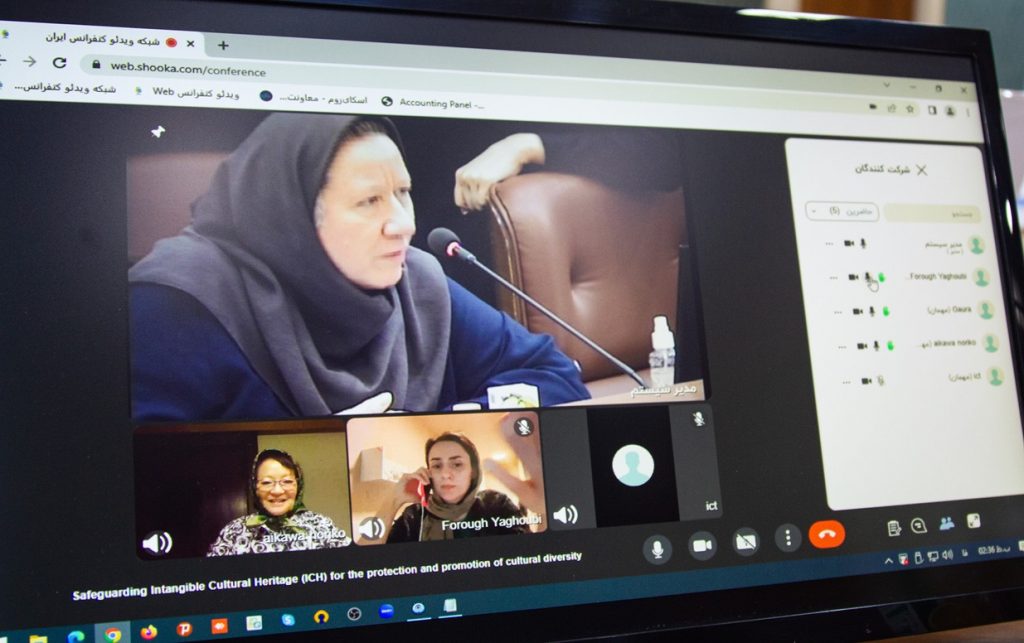


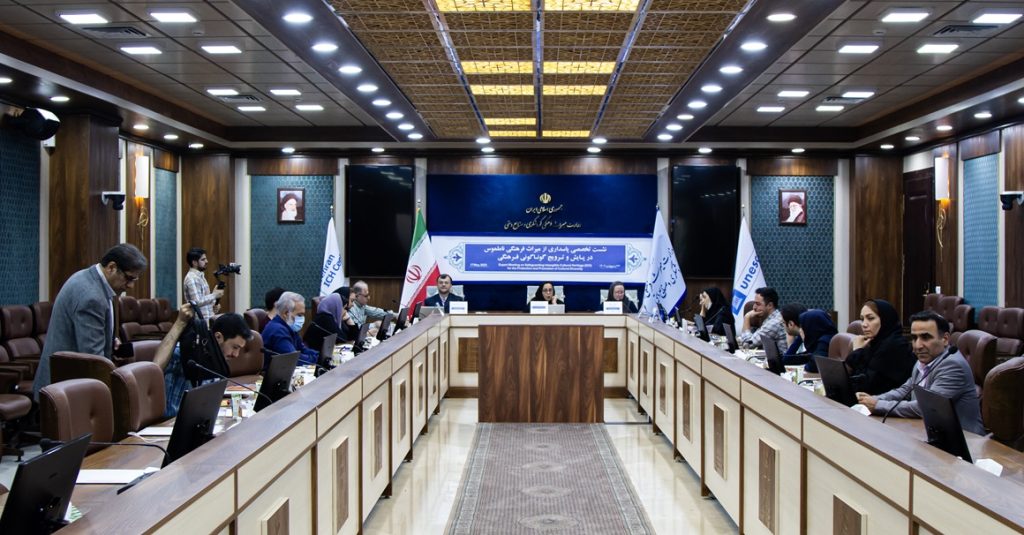
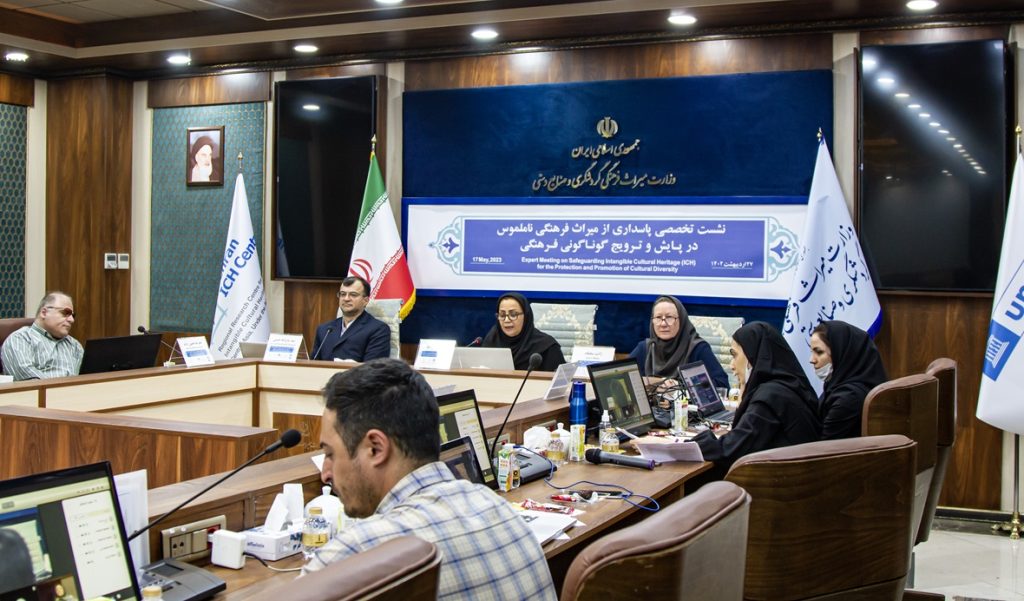
Summary of presentations
The first speaker was Dr Janet Blake, Associate Professor of Law at Shahid Behesti University (Tehran) and Director of the Persian Garden Institute for Living Heritage (PGILH), also member to the Governing Council of the Tehran ICH Centre. She has acted as an International Consultant to UNESCO since 1999, mostly in the field of developing, drafting and implementing the 2003 Convention on Intangible Cultural Heritage. The speaker initially pointed out a fundamental notion that almost no country is culturally homogeneous and the world’s almost 200 countries comprise around 5000 different cultures and of the 5000 different languages, around 4000 are indigenous. “In Iran for example, about 51 percent of the population are from the Persian-speaking Fars majority…, which shows again the diversity of our country”, said the speaker. So that shows us that cultural diversity is a reality in most countries, and at the same time also a value. In response to the question of why do we value cultural diversity and the role of the 2003 convention in supporting it? The speaker referred to how the convention can show us ways of managing cultural diversity in ways that are positive for societies and that by safeguarding Intangible Cultural Heritage (ICH), we are celebrating the diversity of both the elements of this heritage and importantly of the different communities that are the bearers of this heritage. We need to ensure that the diversity of heritage continues, but very importantly we need to have respect for each other’s different cultures and heritages at the same time, emphasised the speaker.
To continue, the topic of “unity in diversity” was discussed and how we can reconcile the diversity of cultural expressions in any society with some notion of a shared national identity and even the notion of shared values?”. One way of addressing this is to accept that each culture has its own specificities, while at the same time we can recognise the existence of shared common values. By celebrating the diversity of different elements of intangible cultural heritage, this is a way of celebrating those specific characteristics, explained Dr Blake. Further, the history in UNESCO of the idea of cultural diversity, the connection of cultural diversity with the idea of peace and peaceful co-existence, and the interconnected idea of intercultural dialogue, were discussed. The situation of Iran being situated over millennia almost in the middle of the Silk Roads and the fact that Iran has welcomed many different cultures from the world travelling through and the absorption of some of these influences, was brought as an example of how Iran has contributed to cultural diversity, cultural sharing and intercultural dialogue. Dr Blake then spoke about the idea of “representativeness”, to express how the 2003 Convention itself expresses the idea of diversity. In favour of explaining this concept, the speaker said, each element that is inscribed (under the 2003 convention), at least in theory, is not inscribed for being unique, special or outstanding, which is the philosophy that you have in the world heritage convention. It is inscribed because it is typical of a type of intangible cultural heritage”.
Dr Noriko Aikawa, founder of the ICH programme at UNESCO and in Japan, chief of the 2003 Convention’s development group, and holder of many relevant posts at UNESCO and NGOs, took the floor as the second speaker of the session. Ms Noriko Aikawa was the person who instituted the living human treasures programme in UNESCO in 1996 and then the Masterpieces of Oral and Intangible Heritage in 1998, without which the 2003 Convention would not have been.
The speaker’s presentation focused on the principles of safeguarding Intangible Cultural Heritage based on UNESCO’s standard-setting documents and in Japan. The process of the development and finally adoption of the Convention in 2003 in the event of the 32nd session of the UNESCO General Conference without any opposing vote but with 8 abstentions (UK, Australia, New Zealand, Denmark, Russia, US, Canada and Switzerland), the Japanese system for protection and safeguarding of ICH (relevant legal documents from 1950 through to 2004), the Japanese selection criteria, the notion of the Living National Treasure in Japan, governmental protection issues, the transmission of folk cultural property, the importance of raising the awareness of local communities, also the conservation techniques for cultural properties, were among matters discussed by the speaker. To conclude, the challenges met by the Japanese governments in meeting the protection/safeguarding requirements of the Japanese ICH and cultural properties were listed as below:
- Lack of inheritors;
- Handicrafts losing their function;
- Lack of raw materials and a place to perform;
- Economic incentive;
The third speaker of the session was Dr Roohollah Hassani, cultural engineering specialist and Deputy for International Affairs at the Iranian Cultural Council. The speaker had also served as the Iranian cultural attaché to Germany and represented the Ministry of Islamic Culture and Guidance at UNESCO for 8 years.
He initially explained the difference between cultural engineering and other notions such as cultural policies, etc. His proposal was to promote the sister-hood of Iranian border cities with the border cities of Iranian neighbouring countries, due to the fact that most conflicts occur in border cities. This proposal, as stated by the speaker, was initially projected in 1397 (2018) and it was approved of by the Iranian Ministry of Interior as a model for peace in 2018, in the framework of the International Decade for the Rapprochement of Cultures. The speaker’s main suggestion was thus to have the said proposal followed-up at the Tehran ICH Centre and, if acceptable, brought to the attention of UNESCO.
The 4th speaker was Dr Alireza Hassanzadeh, Director of the Anthropological Research Institute and Faculty at the Research Institute of Cultural Heritage and Tourism, also writer and researcher. The speaker initially explained the concept of primordial identity or identity based on a retreat to ethnic communities’ and nation’s cultural roots. He introduced the Iranian identity as being of the primordial type. According to the speaker, this type of identity includes elements of language, ritual, religion, myth, motherland, history, etc. Dr Hassanzadeh explained that despite the polyphonic sources of mystic literature as depicted by poets such as Hafiz and Rumi, the dominant pattern of the Iranian national identity was defined by unofficial rites and patterns in various dynasties throughout history, which identified as a macro narrative. Although this macro/grand narrative never contrasted the sub/micro narrative in the history of Iran, we do not see any trace of the unofficial micro narratives in the grand/macro narratives as the dominant pattern. The sub-narratives did not constitute the official narrative of the Iranian national identity. Sub-narratives are the outcome of sub-cultures. Macro narratives move towards monoglossia, while micro narratives move towards heteroglossia in the structure of cultural expression. With the formation of the contemporary government, the thinking of the prevalence of the macro narrative as the main constituent of the national identity gained weight. However, today, we are witness to the existence of both the macro and micro narratives in the formation of the Iranian national identity. As such, the national Iranian identity today includes the diverse cultural expressions of the diverse Iranian ethnic communities. In other words, our national identity today is of a multi-vocal or polyphonic nature. Further into his speech, the speaker touched upon relevant examples to better define the above concepts.
Mr Gaura Mancacaritadipura was the fifth speaker of this session. A member to the Governing Council of the Tehran ICH Centre, the speaker represented Indonesia. To begin with the speaker defined intangible cultural heritage and its various manifestations. He defined cultural diversity as an iinternational agreement that ensures artists, cultural professionals, practitioners and citizens worldwide can create, produce, disseminate and enjoy a broad range of cultural goods, services and activities, including their own, saying that it was adopted because the international community signalled the urgency for the implementation of international law that would recognise: a) the distinctive nature of cultural goods, services and activities as vehicles of identity, value and meaning and b) that while cultural goods, services and activities have important economic value, they are not mere commodities or consumer goods that can only be regarded as objects of trade. The speaker then defined the cultural diversity of Indonesia based on the diversity of languages in this country. He then touched on the long process undertaken for the creation of the 2003 convention compared to the time taken to create and adopt the 2005 convention, explaining the reason for the hasty creation of the 2005 convention UNESCO’s fear of the emergence of a monoculture. While referring to the vast cultural diversity of Indonesia, the speaker named Indonesia one of the most complicated countries to manage in regard to cultural diversity and said that the question of how the Government manages the widespread cultural diversity of Indonesia was the main question underlying his presentation. Further he explained the inter-relation of the 2003 and 2005 conventions and their crossovers as well as the five pronciples by which the Indonesian Government holds the multi-cultural Indonesia nation together.
Dr Sheida Mahnam (Ms) spoke sixth in this session. As the Director General of the Iranian Health Social Responsibility Institute, she touched on the link between cultural diversity, resilience and many more cultural and social concepts. She continued to say that due to the growing loss of respect for cultural diversity in contemporary societies and among youth, it is a responsibility of the officials and entrepreneurs, like herself, to raise awareness among youth about the importance of respecting cultural differences, enabling them gain respect for cultural others. She then emphasised the importance of socially-informed and culturally-informed policy-making for economic and political prosperity. She concluded by saying that cultural programmes need to be linked to economy otherwise they would not prove successful.
The final and seventh speaker of the expert meeting was Dr Atusa Momeni, Acting Director of Tehran ICH Centre. As the forerunner of safeguarding intangible cultural heritage in West and Central Asia, Dr Momeni began her presentation by defining the concept of cultural communities, introducing them as the “golden chain linking geography to territorial resources”. She continued by explaining that the triangle of cultural communities, territorial resources and natural and historical geography would lead to the formation of a dynamic treasury of living values, which display diverse methods of being and cognition in the continuity of livability from a geographical stance, with a view to natural territorial resources. She introduced language, art, skills and knowledge, beliefs and rituals and traditions as the diverse manifestations of assets and treasures of cultural communities, bringing examples for each and explaining that the mentioned examples show how the historical and cultural memories of communities; technological and knowledge-based discoveries; religious beliefs and rituals; languages and sources of inter-generational transmission have helped communities overcome crises and natural disasters throughout history whenever natural and/or human-induced disasters have left their negative footprints on the lives of the human community. Finally, she touched on the importance of the integrity of the various cultural communities (civic, rural and ethnic) to form a single nation that displays its essence in the frame of “unity in diversity”. By explaining the process of the formation of the 2003 convention and the role played by this convention in the preservation of cultural diversity she concluded by saying that “tangible cultural heritage is the fruit of intangible cultural heritage (ICH) and intangible cultural heritage is the fruit of a cultural diversity that is regarded a national treasure for any nation”.
